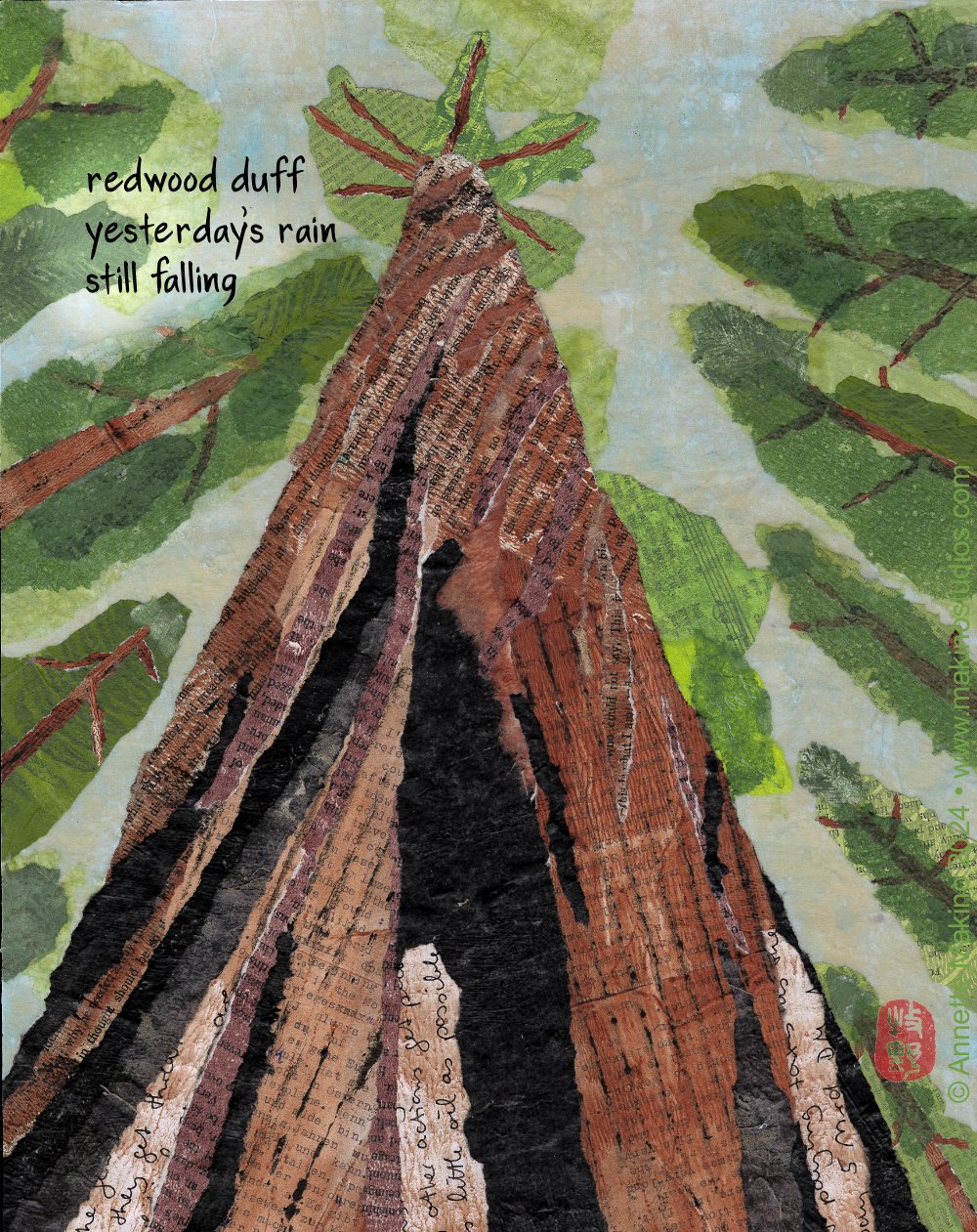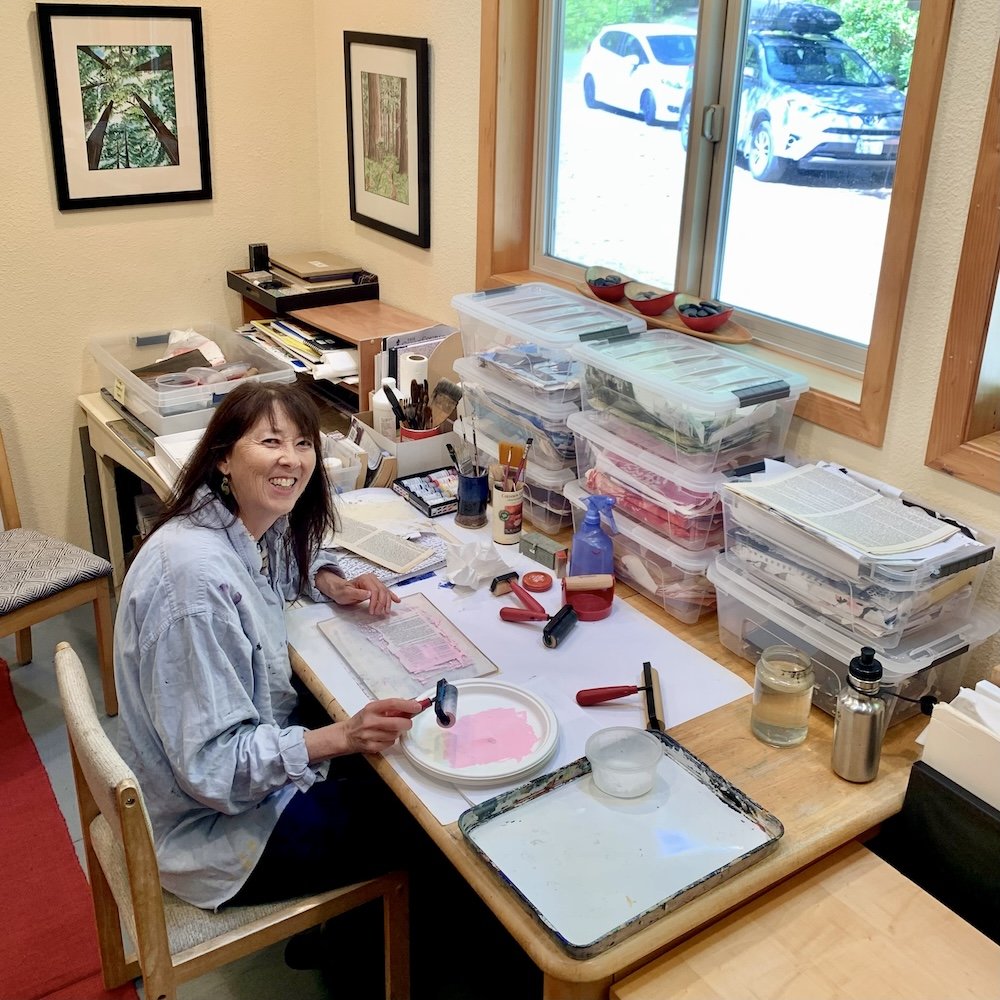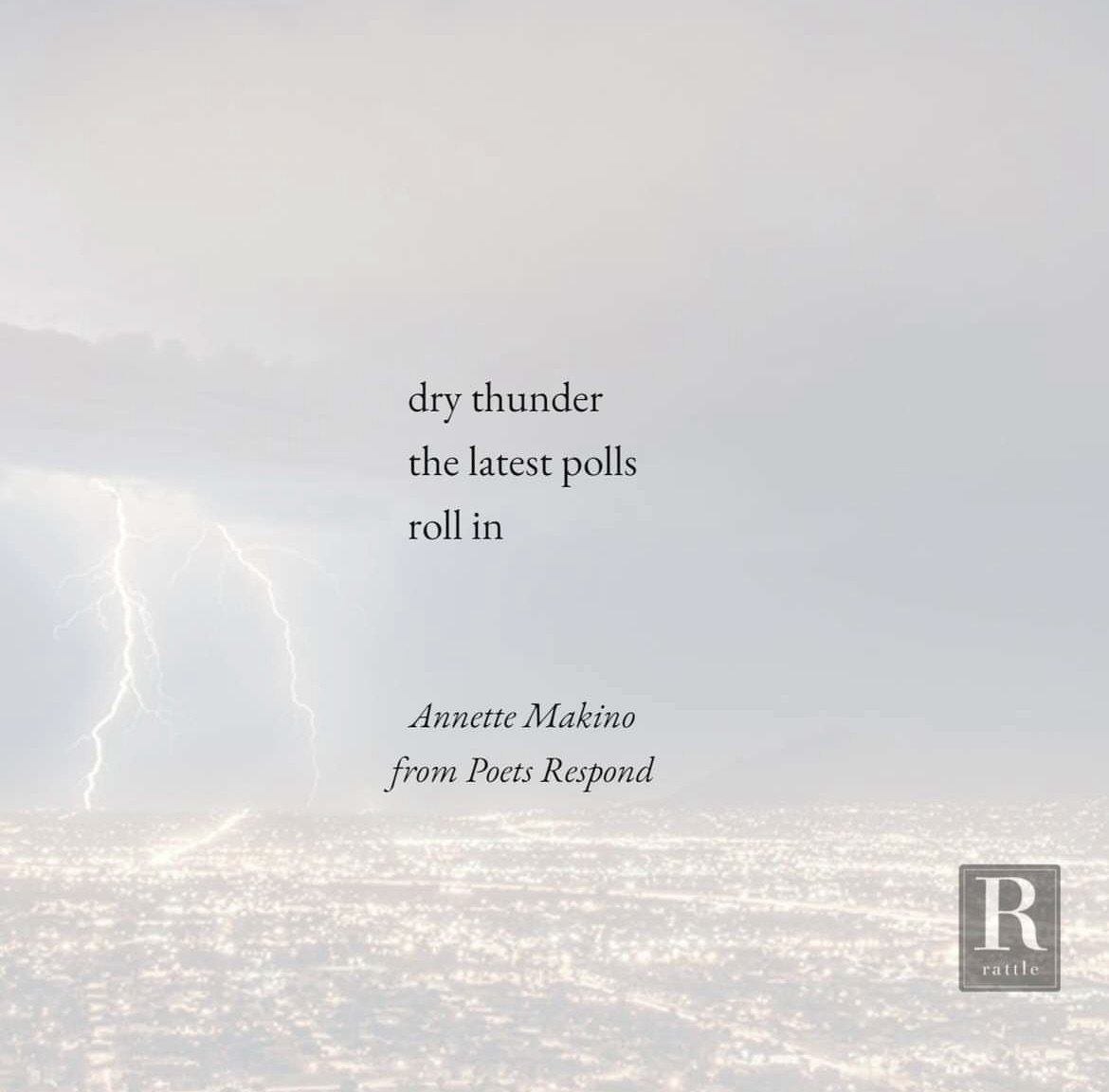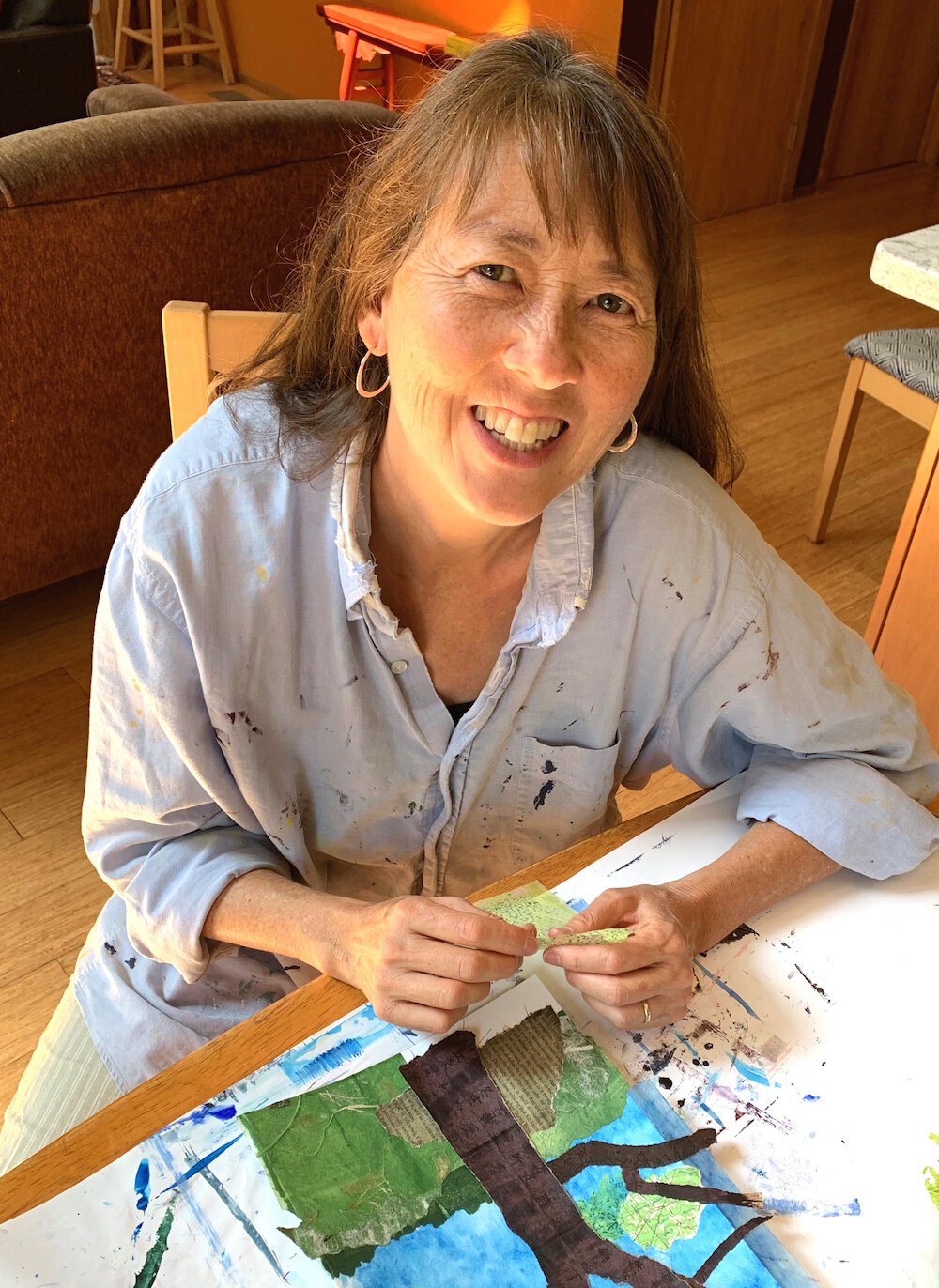STICKS & STONES (Erica Goss's monthly newsletter dedicated to poetry, reading and literature)
ISSUE 91, JULY 1, 2024
(Read on Erica Goss’ website; scroll down to Q&A)
A Closer Look with Annette Makino
Our mothers became friends when we were toddlers, so I can’t remember a time when I didn’t know Annette Makino. Annette has lived in Japan and Europe, traveled widely in her career as a journalist, and runs Makino Studios from her home in Northern California.
EG: How did you get started with haiku?
AM: I first learned about and wrote haiku in sixth grade as part of a lesson on syllables. Like so many of us, I was mis-taught that haiku in English have to follow a three-line, 5-7-5 syllable count. Turns out this rule is something of an urban myth, based on a misunderstanding of how Japanese sound-syllables carry over to English syllables. Literary haiku that are published in the leading haiku journals in English are almost always shorter than 5-7-5. Also, nowadays the classic three-line format has broadened to include one-line haiku and other variations.
Anyhow, after that awkward sixth grade introduction, I set haiku aside for almost four decades. But in 2010 an artist friend gave me a lovely book of poems by her Japanese grandmother that were illustrated by my friend. These were senryu, a more humorous or wry cousin of haiku that focuses on the foibles of human nature. I was inspired to start writing my own senryu and then moved on to haiku, sort of entering by the back door. I also began creating haiga, a Japanese tradition of art combined with haiku.
EG: Haiga is art plus haiku. Is this form more accessible to the public? In what ways?
AM: I must confess that even as a poet myself, I find much of contemporary poetry to be inaccessible—or just too much work to figure out! Haiku, sometimes called "one-breath poems,” tend to be more digestible. When you add in a visual component, as in a haiga, the piece becomes even easier to approach, even for those who never read poetry. While not everyone enjoys chewing on poetry, we all naturally respond to images.
Besides publishing a book of my watercolor haiga, I publish an annual mini-calendar featuring my haiga. Most of my customers aren’t haiku poets or haiga connoisseurs; they just like the words and images. So you might say the calendar is a stealthy way of spreading poetry among people who might not otherwise seek it out.
EG: What comes first, haiku or art?
AM: I usually write the haiku first, then create the art—for some reason that's easier for me. But there are times when I just have the urge to create a collage of say, jellyfish, and then I have to come up with the haiku after the fact. That is tricker.
A challenge is that in the best haiga, the image is not simply an illustration of the words and the words are not just a description of the image. Rather, there should be a bit of a gap between word and image just as there should be a gap between the two parts of a haiku, deepening the piece and allowing the viewer or reader room to provide their own interpretation. Getting that distance just right is my eternal quest. You can see some examples of haiga on my website gallery.
EG: How do you balance running a small business with your artistic work?
AM: Small business owners know you could work 24/7 just on the business side of things: marketing, accounting, filling orders. So it can be hard to prioritize the time to make art and write. It’s always less urgent, even though that’s the core of my Makino Studios art business.
On the plus side, I get so much positive feedback from my customers, whether online, in stores or at art fairs. They tell me how my cards, especially, help them connect with the people they love. For instance, at a holiday fair, an older woman told me that one of my cards was the perfect message to make up with her sister after they’d had a fight. Another time, a burly guy in a skydiving sweatshirt shared that whenever he goes out of town, he leaves a different card for his wife to open every day; he especially loves giving her my cards. My book inspired a 90-year old man to start writing and sharing haiku with his daughter two states away, and then to take a haiku class. And at a recent dental visit, I spotted my book in the exam room, right next to a teeth model. Turns out a customer had given it to his hygienist who thought patients might find it calming. Knowing my work has a concrete impact on people means the world to me and motivates me to keep creating and putting the work out there.
Also, I hate this fact, but I sometimes need external pressure, like a calendar printing deadline, to buckle down and start producing. So in that sense, running Makino Studios gives me an incentive to make art and write even when I don’t feel particularly inspired.
EG: Can you share any advice you have for someone just starting out as an artist or writer?
AM: Expose yourself to a variety of artists and poets, and of genres. Notice what moves you. Go deeper in that direction.
Create regularly—a bad draft can always be improved later, and it's a lot better than starting with a blank page. I made myself a rule that I have to write a haiku before checking social media. Though I often fall off the wagon, I now write more poems and spend less time scrolling Instagram or Facebook.
Read, take classes, join groups, whatever works best for you to deepen your practice. But whatever you learn, keep trusting your own voice, your own creative urge. You have something unique to contribute to the world.
Finally, few of us are likely to get rich on our poetry and art, so have fun!
let us live
on poetry and honey
so rich on the tongue
Annette Makino’s work is regularly published in the leading journals of haiku and haiga in English and in many anthologies. Her haiku have garnered international honors, including the Touchstone Award, the Henderson Haiku Award, the Brady Senryu Award and the Porad Haiku Award. Her book, Water and Stone: Ten Years of Art and Haiku, won Honorable Mention in the Haiku Society of America’s Merit Book Awards. Raised by a Japanese father and a Swiss mother, Annette has lived in Japan and Europe. Visit her website for a gallery of her art as well as greeting cards, prints, and a blog about her creative process.
Read Annette’s article in the December 12, 2023 issue of the Haiku Society of America.




























